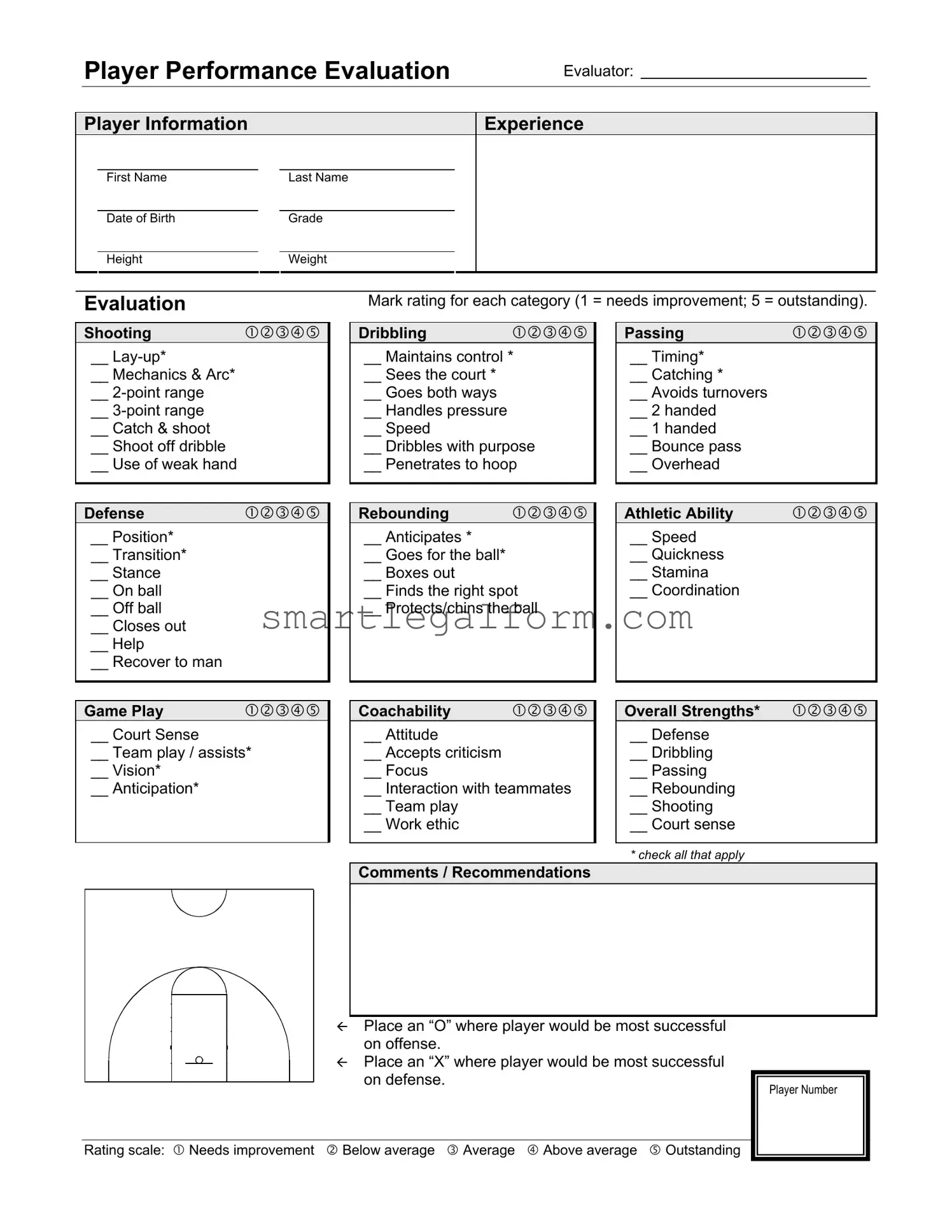When filling out the Basketball Evaluation form, individuals often make several common mistakes that can impact the accuracy of the evaluation. One frequent error is failing to provide complete player information. This includes omitting crucial details such as the player’s first and last name, date of birth, or grade. Without this information, it becomes difficult to track the player’s progress or compare evaluations over time.
Another mistake is neglecting to rate every category. Each section, from shooting to passing and overall strengths, requires a rating. Skipping categories can lead to an incomplete assessment of the player’s abilities. Evaluators should take the time to carefully consider each skill and provide a rating to ensure a comprehensive evaluation.
In addition, evaluators sometimes misunderstand the rating scale. The form uses a scale from 1 to 5, where 1 indicates that a skill needs improvement and 5 denotes outstanding performance. Misinterpreting these ratings can result in inflated or deflated scores that do not accurately reflect the player's abilities. It is essential to use the scale consistently and thoughtfully.
Another common issue arises when evaluators do not provide specific comments or recommendations. While the rating system offers a quantitative assessment, qualitative feedback is equally important. Comments can highlight a player’s strengths and areas for improvement, providing valuable insights for coaches and players alike. Without these notes, the evaluation may lack context and depth.
Lastly, evaluators may forget to mark the sections for offensive and defensive strengths with an “O” or an “X.” This visual representation helps coaches understand where the player excels on the court. Omitting these marks can lead to confusion and may hinder the player’s development by not clearly indicating their optimal positions. Ensuring all sections are filled out accurately and completely will result in a more effective evaluation process.

